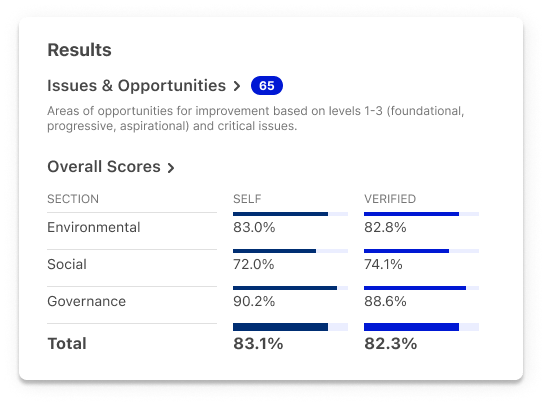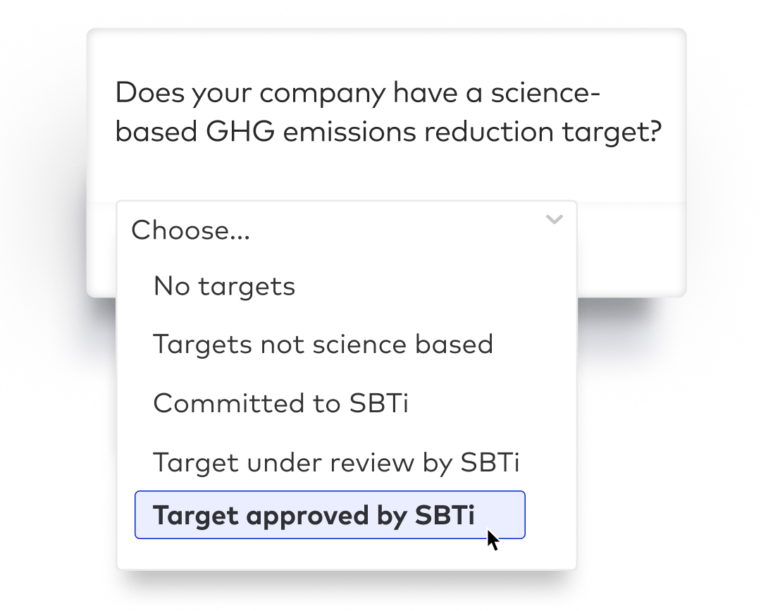
Blog
Note: This article predates our launch as Worldly.
It can be difficult for brands and retailers to keep track of every sustainability initiative. And every year, it seems that a new important ESG framework emerges with distinct questions that companies must now find the answers to.

By examining a company’s practices, programs, and policies, the Higg Brand and Retail Module (Higg BRM) builds a holistic view of a company’s ESG health. Designed to help companies take action, the tool rounds up all potential issues and opportunities to improve in one dashboard view. This helps businesses clearly determine where they should prioritize their sustainability efforts.
The tool was recently redesigned to help apparel and footwear companies more comprehensively view their ESG impact. The tool is better equipped to help companies standardize their performance measurement and communication. Users will be able to share consistent, verified data – unifying how the industry shares and tracks progress.
Higg users that have not yet defined an ESG strategy can leverage sections of the Higg BRM to build their own internal programs and set KPIs. The tool’s Issues & Opportunities section serves as a helpful launching point to measure a company’s sustainability baseline and measure improvement year over year.

Our partners at the Sustainable Apparel Coalition (SAC) interviewed dozens of brands, retailers, and industry stakeholders to hear how the Higg BRM could be better aligned with current sustainability priorities. As a result, the tool was restructured to help businesses gather a holistic view of their supply chain, identify gaps in their sustainability programs, and know where to improve.
As part of their research, the SAC also reviewed questions from 15 of the most prominent ESG reporting bodies and frameworks to help them better understand what kinds of impact areas are the most essential for today’s reporting. Subsequently, the new Higg BRM was redesigned to be more complementary to many of the most prominent frameworks, including the Benefit Corp (BCorp) certification, Sustainability Accounting Standards Board (SASB) reporting, and the Zero Discharge of Hazardous Chemicals (ZDHC) certification.

The Higg BRM question set is entirely new this year. All questions are tied to an Environmental, Social, or Governance pillar – better reflecting how many companies organize their own internal sustainability strategies. Each pillar begins with general questions and then dives into specific risk areas. For example, the Environmental pillar explores a company’s policies related to biodiversity, climate, and water. The Social pillar examines areas including workers, employees, and communities. And the Governance pillar dives into company structure & management, and ethics & behavior.
The Higg BRM now focuses more on a business’s due diligence of practices, programs, and policies. The new structure follows the OECD’s Due Diligence Guidance for Responsible Business, which illuminates how a company assesses risk, builds policies, measures targets, and communicates progress. Completing this exercise for every impact pillar helps businesses see where they could be more diligent and build stronger policies.
The leading ESG framework for the apparel and footwear industry, the updated Higg BRM will help businesses understand their readiness for reporting to regulatory requirements. The assessment features questions that are either a perfect or near-perfect match from frameworks including Textile Exchange, MCI, ZDHC, Brand to Zero Program, Fair Wear & STTi, and Common Framework on Responsible Purchasing Practices. It also includes questions that are inspired by questions from GRI, WDI, SASB, CDP, CHRP, and BCorp. Based on answers tagged back to these frameworks, companies will be able to start gauge how ready they are to submit to these bodies.
Brands and retailers can report their 2022 impact in the Higg BRM from March 1st to June 30th, 2023.
© 2024 Worldly. All Rights Reserved